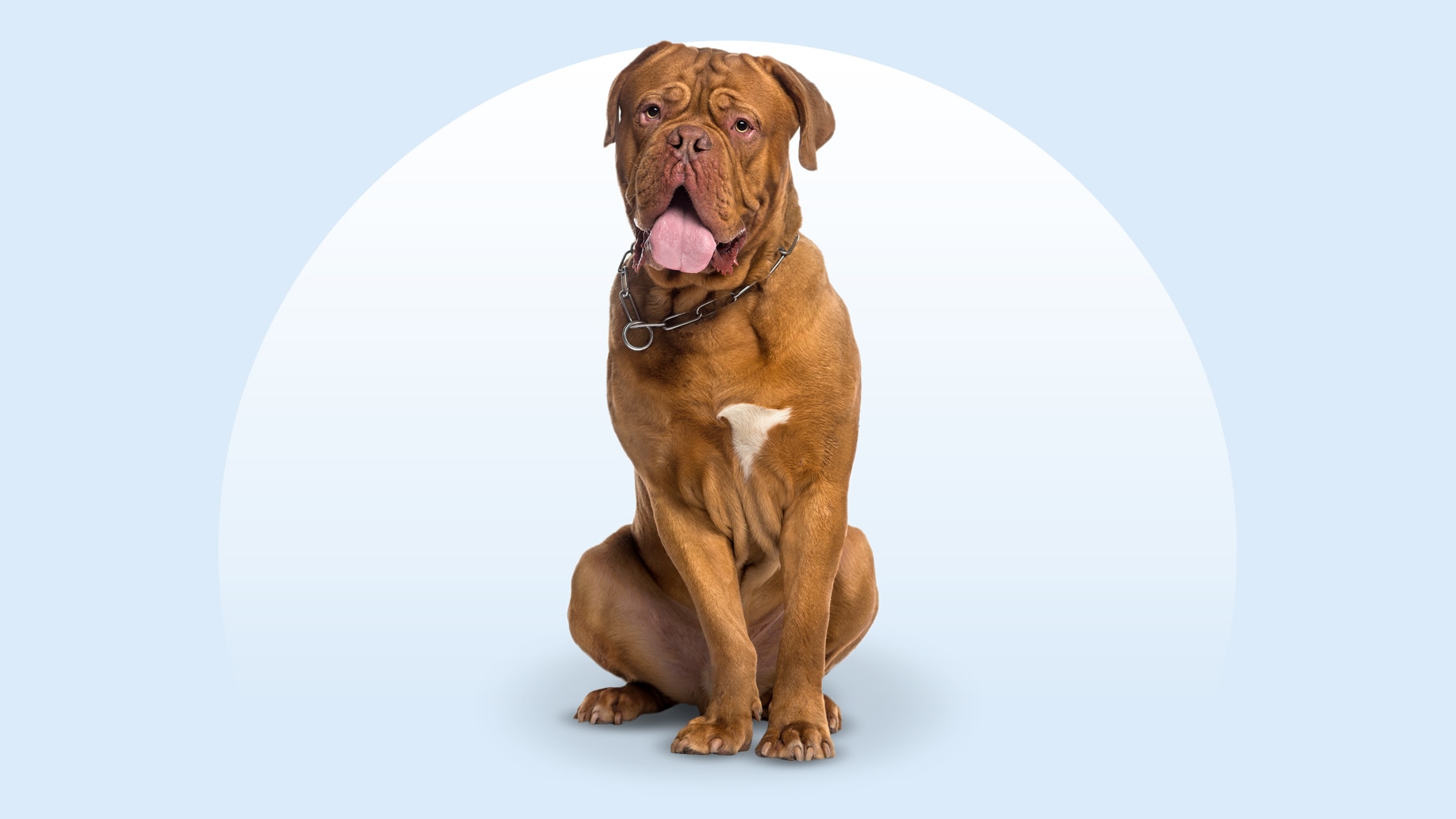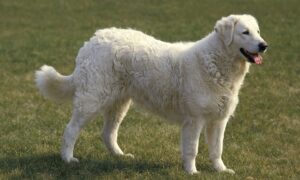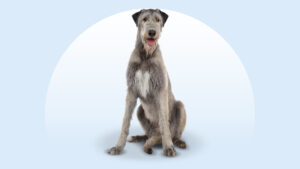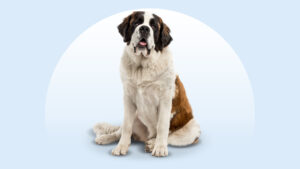Dogue de Bordeaux
Updated May 5, 2025
Dogue de Bordeaux
Updated May 5, 2025
Don't be fooled by the Dogue de Bordeaux's large and in-charge appearance—these are powerful yet gentle giants. Also known as French Mastiffs, they need early socialization and consistent training to live their best lives, making them ideal companions for experienced pet parents.
Powerful, Quiet, Stubborn
Male: 110+ pounds
Female: 99+ pounds
Male: 23-27 inches
Female: 23-26 inches
5 to 8 years
Fawn, Isabella, Mahogany, Red
Thinking about adding a Dogue de Bordeaux to your home? You better have a king-sized bed! While this large-and-in-charge breed (also called the French Mastiff) may look intimidating with their massive heads and drooly jowls, they actually want nothing more than to snuggle up with their people—morning, noon and night. Prepare to be noticed when out on walks with this gentle giant, as their impressive size makes them hard to miss, though these pups are more interested in what you’re doing than in meeting new people. If the perfect end to your day includes the 3 Rs—rest, relax and repose—then slide on over and make some room for the Dogue de Bordeaux.
Dogue de Bordeaux Characteristics
Dogue de Bordeaux Appearance
With their massive wrinkly heads and expressive eyes, the Dogue de Bordeaux is a sweet and sensitive soul. While the Dogue de Bordeaux’s strong, muscular body and no-nonsense expression beg for them to be taken seriously, it’s hard to be intimidated by their drooly, lovable face.
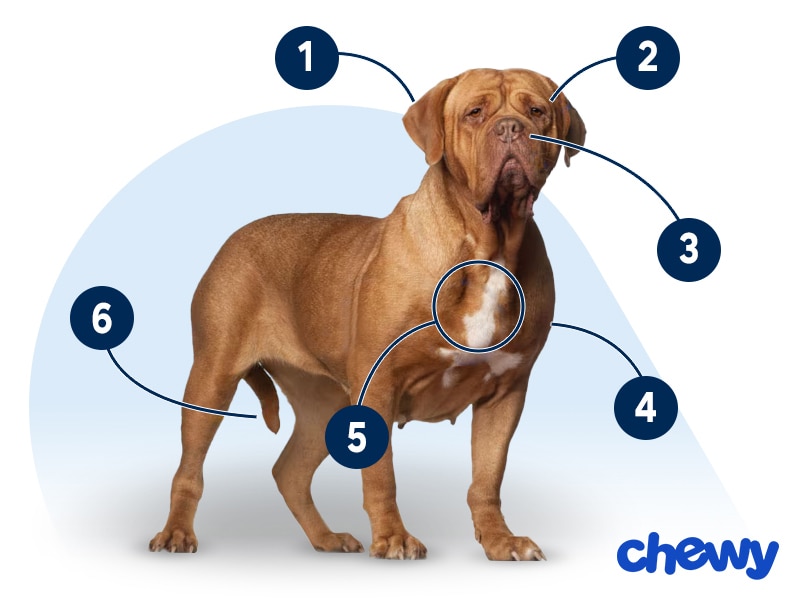
- Ears
Their ears are triangle-shaped and flop over.
- Eyes
Their eyes are oval and wide-set, and range in color from hazel to dark brown.
- Nose
Dogue de Bordeaux noses are brown or black depending on the mask color.
- Coat Length
Dogue de Bordeaux have a fine, soft and short coat.
- Coat Color
Dogue de Bordeaux coat colors include shades of fawn, Isabella (lilac), mahogany and red. Markings on their coat include black mask, black mask with white markings, brown mask and white patches.
- Tail
The Dogue de Bordeaux's tail is thick at the base with a tip that reaches the hock (a bottom part of their back legs).
Dogue de Bordeaux Temperament
Tom Hanks may have been upstaged by his co-star in the classic 80s movie “Turner & Hooch,” but IRL Hooch would be content to let you steal the show. The Dogue de Bordeaux (also known as the French Mastiff, and the breed that played the lovable aforementioned Hooch) is a calm and mild-mannered pup who is more interested in being your devoted pal than being on the A-list.
While generally gentle and laid-back, Dogue de Bordeaux can be strong-willed and watchful. (They were used to guard French estates back in the day.) Proper socialization and training at an early age are necessary to make sure your puppy doesn’t become overly fearful or reactive toward people they don’t know. Working with a certified trainer can help ensure your puppy grows up to be friendly and confident.
The Dogue de Bordeaux breed can get along with other dogs, cats and kids—if trained properly and/or they grow up together. Children should be taught how to interact gently and respectfully with dogs, too.
The Dogue de Bordeaux can jump into action at a moment’s notice, and are surprisingly speedy for their size, but they are happiest lounging around with their family. They thrive on interacting with the people they love the most, though their snoring and constant drooling certainly won’t win them any awards in the Quietest Sleeper or Tidiest Dog categories.
How to Care for a Dogue de Bordeaux
These dogs may be high on the maintenance scale, but caring for a Dogue de Bordeaux is not all work and no play. While their wrinkly faces, complete with buckets of drool, require daily cleaning, their fur is fairly easy to maintain and requires minimal brushing. As a puppy, the breed needs proper socialization and training to grow up friendly and confident. But when it comes to exercise, you’re in luck—they’re not really into running and have much lower energy levels than, say, a Border Collie. So that leaves more time for playing and lounging (again, you’re really going to need that king-sized bed!).
Grooming
Training
Diet
Exercise
Environment
Dogue de Bordeaux Health
The Dogue de Bordeaux has a lifespan of 5 to 8 years, and there are several health issues seen commonly in this breed. Knowing about these potential concerns will help you to proactively ensure your pup lives a happy, long life.
- Bloat: Also known as gastric dilatation and volvulus (GDV), bloat is a major emergency concern in larger breeds with deep chests. It occurs when a dog’s stomach fills with gas, food or fluid. When the stomach becomes distended, it puts pressure on the organs and decreases blood flow. In many cases, the stomach twists and obstructs blood supply to major organs. This can happen quickly and be life-threatening and requires surgery.
- Orthopedic Issues: The size of the Dogue de Bordeaux can put strain on bones, joints and ligaments, resulting in dysplasia in the hips, elbows and shoulders. Dysplasia occurs when the joint isn’t formed correctly and can be painful. Joint dysplasia can generally be treated with medication, such as joint supplements and anti-inflammatories, and sometimes surgery.
- Heart Disease: Dogues de Bordeaux are especially susceptible to a heart condition called dilated cardiomyopathy (DCM), which occurs when the heart becomes enlarged and weak and can no longer pump blood effectively. This condition can usually be managed with medication. Another heart concern is aortic stenosis, which is a narrowing of one of the valves of the heart. Depending on the severity, surgery may be needed.
- Lymphoma: Lymphoma, or lymphosarcoma, occurs more often in the Dogue de Bordeaux than other breeds. The disease causes the body to make abnormal lymphocytes, a type of white blood cell, which means it can be found anywhere in the body. It’s one of the few cancers that can be found through a blood test. Like in humans, the treatment is typically chemotherapy.
- Epilepsy: Seizure disorders in the Dogue de Bordeaux are typically genetic and occur between 6 months and 5 years of age. Though scary for a pet parent to watch, seizures can usually be managed with medication.
- Hereditary Footpad Hyperkeratosis: This occurs when the skin on the footpads develops abnormally, resulting in hardening that leads to splits and cracks. Signs typically develop in Dogues at 4-6 months of age. There is no cure, but there are medications and techniques to help manage the condition.
Dogue de Bordeaux History
Like several dog breeds, including the Berger de Beauce, the Dogue de Bordeaux originates from France, in the Bordeaux region. Also called French Mastiffs, their history goes back to ancient times, and the accepted theory is that they were introduced to France (known as Gaul at the time) in the first century BC. The dogs were used as war dogs and ruthless warriors. Throughout time, the breed has been used as hunters and drafters pulling wagons and carts.
Dogues de Bordeaux were originally bred in two types, the smaller Doguin who disappeared in the 1700s and the larger dog which is what we now know as the Dogue de Bordeaux. Around that same time, they were used as guard dogs for estates of aristocrats, but that ended during the French Revolution when nobility were sent to prison or killed.
The breed became popular in the United States with the release of the 1989 movie “Turner & Hooch.” The American Kennel Club recognized the breed in 2007, and the Dogue de Bordeaux joined the AKC Working group in 2008. (The Working group includes the dogs who typically have jobs to do, like guarding or pulling sleds.)
Are you looking to add a Dogue de Bordeaux puppy to your family? This type of puppy typically costs between $1,500-$2,500. Check out the AKC puppy finder to find a reputable breeder who should screen for health and temperament issues. You can also seek out local Dogue de Bordeaux rescues to find a worthy, loving dog to adopt, or keep an eye out for the breed at your local animal shelter. Search Chewy’s database of adoptable dogs in your area. When adopting, be sure to ask for the dog’s wellness check information.
FAQs
How do you pronounce Dogue de Bordeaux?
Do Dogue de Bordeaux bark a lot?
Do Dogue de Bordeaux shed?
What are the most common Dogue de Bordeaux mixes?
Expert input provided by Dr. Mandy Boos, a veterinarian at Laurel Veterinary Clinic in Broomfield, Colo., and Mindy Jarvis, ABC-CPDT, CGC evaluator, and owner of Noble Beast Dog Training in Denver, Colo.
Breed characteristic ratings provided by veterinarian Dr. Sarah J. Wooten, DVM, CVJ, a veterinarian at Sheep Draw Veterinary Hospital in Greeley, Colorado; dog trainer and behavior consultant Irith Bloom, CPDT-KSA, CBCC-KA, CDBC, owner of The Sophisticated Dog, LLC, in Los Angeles; and certified animal behavior consultant Amy Shojai, CABC, in Sherman, Texas.
The health content was medically reviewed by Chewy vets.
